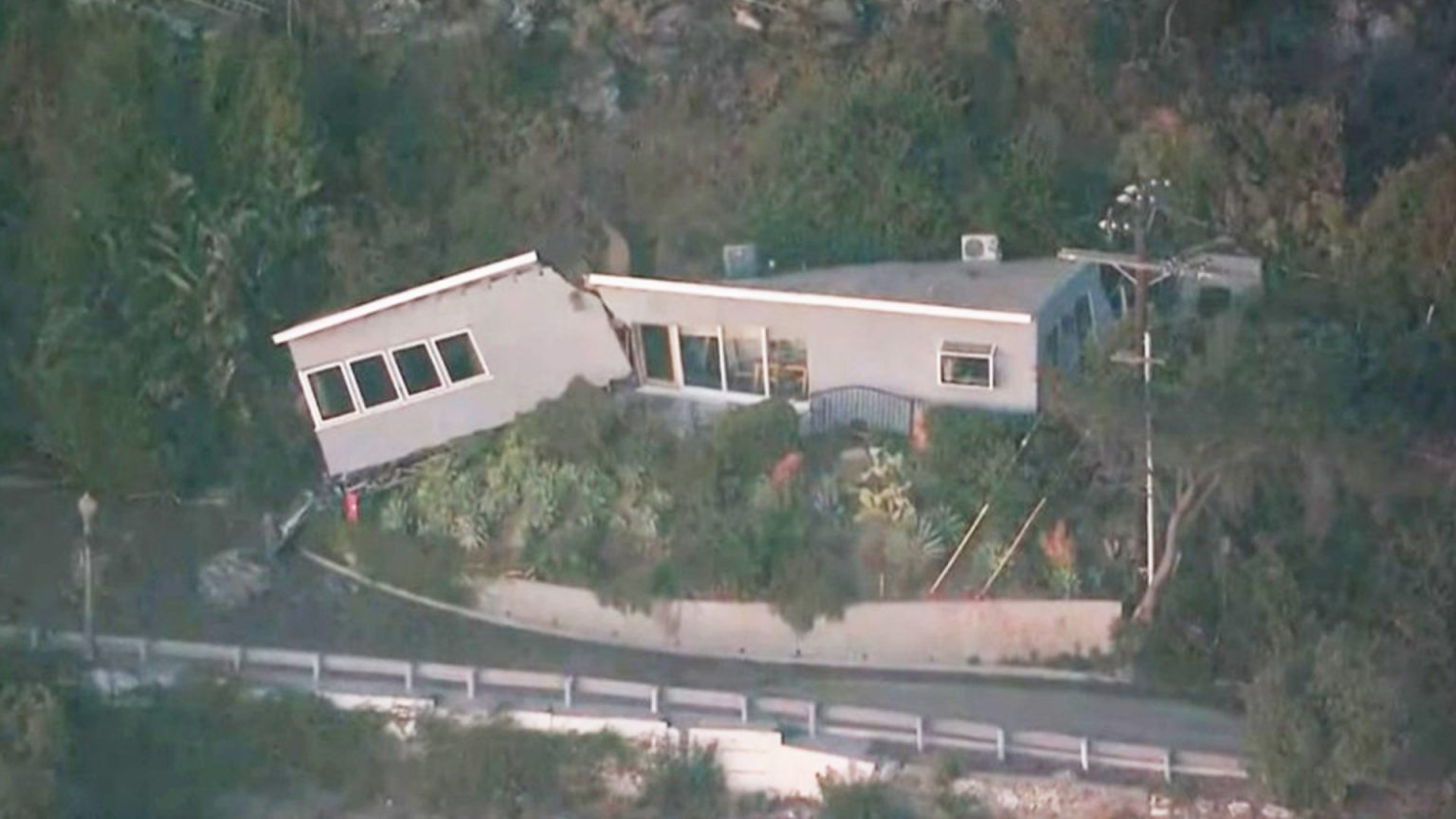The devastating Palisades Fire, the largest in Los Angeles history, continues to wreak havoc, leaving a trail of destruction far beyond the immediate flames. While thousands of structures were ravaged by the fire itself, a new threat emerged in the form of mudslides triggered by the massive amounts of water used to combat the inferno. One home, which had miraculously survived the initial firestorm, was tragically split in two by the force of the mudslide, a stark reminder of the multifaceted dangers these natural disasters present. The image of the bisected house serves as a symbol of the unsettling aftermath and the long road to recovery that lies ahead for affected communities.
The mudslide that ripped through the Pacific Palisades home occurred after the main fire had passed, showcasing the unpredictable and cascading nature of disaster events. The home, perched on a hillside, was susceptible to the destabilizing effects of the water runoff from the firefighting efforts. The deluge of water, mixed with debris and loosened soil, created a powerful torrent that overwhelmed the house’s foundation, ultimately causing it to buckle and break apart. The incident highlights the complex interplay between natural forces and human interventions, where the very actions taken to mitigate one danger can inadvertently create another.
Bryan Kirkwood, a security guard hired to protect homes in the fire-stricken area, was among the first to witness the mudslide’s devastating impact on the Palisades home. His shock and disbelief underscore the sheer scale of the destruction, which went beyond the initial fire damage. Kirkwood’s account serves as a firsthand testament to the unexpected and often overwhelming consequences of natural disasters, demonstrating how even those prepared for the immediate threat can be caught off guard by the ensuing chain of events. The mudslide’s destruction emphasizes the need for comprehensive disaster preparedness planning that considers not only the initial event but also its potential secondary effects.
The Palisades Fire, part of a larger cluster of wildfires plaguing Southern California, has forced over 170,000 residents to evacuate, creating a chaotic and uncertain landscape for many. Amid the evacuations, concerns about looting arose, prompting some homeowners to hire private security to protect their properties. The District Attorney of Los Angeles County issued a stern warning to potential looters, emphasizing the seriousness of exploiting a disaster for personal gain and promising swift prosecution for those caught engaging in such criminal activity. The warning underscores the societal challenges that often accompany large-scale emergencies, as opportunists attempt to capitalize on the vulnerability of those affected.
Beyond the immediate physical damage, the wildfires have left a deep emotional scar on the city of Los Angeles. A sense of collective trauma pervades the community as residents grapple with the loss of homes, cherished possessions, and a sense of security. The fires have brought into sharp focus the fragility of life and the ever-present threat of natural disasters in this region. The widespread destruction and displacement have created a climate of anxiety and uncertainty, leaving residents to confront the daunting task of rebuilding their lives and their city.
The wildfires have also exposed systemic issues, including allegations of insurance policy cancellations shortly before the fires and concerns about mismanagement and corruption in disaster response. These accusations fuel public anger and frustration, adding another layer of complexity to the recovery process. While the road ahead is undoubtedly challenging, the resilience of the Los Angeles community shines through. The spirit of rebuilding, fueled by hope and determination, is evident, suggesting that despite the devastation, the city will eventually emerge from the ashes, stronger and more prepared for future challenges. The ongoing recovery efforts emphasize the need for improved emergency preparedness, infrastructure resilience, and community support systems to mitigate the impact of future disasters and foster a more resilient future.




